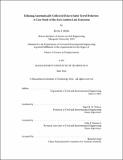| dc.contributor.advisor | Nigel H. M. Wilson and John P. Attanucci. | en_US |
| dc.contributor.author | Muhs, Kevin J. (Kevin Joseph) | en_US |
| dc.contributor.other | Massachusetts Institute of Technology. Dept. of Civil and Environmental Engineering. | en_US |
| dc.date.accessioned | 2012-10-26T16:49:25Z | |
| dc.date.available | 2012-10-26T16:49:25Z | |
| dc.date.copyright | 2012 | en_US |
| dc.date.issued | 2012 | en_US |
| dc.identifier.uri | http://hdl.handle.net/1721.1/74272 | |
| dc.description | Thesis (S.M. in Transportation)--Massachusetts Institute of Technology, Dept. of Civil and Environmental Engineering, 2012. | en_US |
| dc.description | This electronic version was submitted by the student author. The certified thesis is available in the Institute Archives and Special Collections. | en_US |
| dc.description | Cataloged from student submitted PDF version of thesis. | en_US |
| dc.description | Includes bibliographical references (p. 283-284). | en_US |
| dc.description.abstract | Utilizing automatically collected data sources, this research strengthens the understanding of changes in user travel behavior caused by the introduction of the extended East London Line (ELL) into London's public transportation network. A recently developed method for inferring all Oyster users' origins and destinations on the public transportation system, and linking trip segments into full journeys, enables analysts to study the influence of a major capital investment on the larger public transportation network in great detail over a span of time and geography not available with traditional survey methods. Expanding an Oyster-based origin-destination matrix to represent all users provides estimates of overall ridership and passengers' travel patterns. Careful analysis of the usage of the rail line and other public transportation services in its vicinity provides a new method to infer the passenger demand generated by the new service. Through the creation of a large user panel (made up of over 54,000 Oyster users with active cards in April 2010 and who travelled on the ELL in October 2011), this thesis studies changes in journey frequency, travel time, journey distance, public transportation mode share, and access distance by comparing journeys made before and after the introduction of the extended ELL. | en_US |
| dc.description.statementofresponsibility | by Kevin J. Muhs. | en_US |
| dc.format.extent | 284 p. | en_US |
| dc.language.iso | eng | en_US |
| dc.publisher | Massachusetts Institute of Technology | en_US |
| dc.rights | M.I.T. theses are protected by
copyright. They may be viewed from this source for any purpose, but
reproduction or distribution in any format is prohibited without written
permission. See provided URL for inquiries about permission. | en_US |
| dc.rights.uri | http://dspace.mit.edu/handle/1721.1/7582 | en_US |
| dc.subject | Civil and Environmental Engineering. | en_US |
| dc.title | Utilizing automatically collected data to infer travel behavior : a case study of the East London Line extension | en_US |
| dc.type | Thesis | en_US |
| dc.description.degree | S.M.in Transportation | en_US |
| dc.contributor.department | Massachusetts Institute of Technology. Department of Civil and Environmental Engineering | |
| dc.identifier.oclc | 813832784 | en_US |
